Data Analytics & Public Health: A Video Guide
DASH has a new resource available for organizations engaged in sharing data across (or within) sectors: a video primer on data analytics. The video provides an overview of analytics types, foundations, tools, graphics, and potential pitfalls to avoid.
DASH spends a lot of time in this blog space talking about how data sharing and data ecosystems are not just about technology. When it comes to data, it’s essential to consider everything around the technology: relationship-building, contextual understanding, lexicon-building, protocol-adjusting, and so on. DASH prides itself on the many practical resources we have available on our website (and our soon-to-be-launched DASH Knowledge Base (DKB)) for these needs, from equity assessments to communication tip sheets to legal guides.
All that said, the technology itself (and knowledge of it) is also an important factor in a healthy data ecosystem. This past fall and winter, DASH was lucky to work with IPHI intern Katy Young, an IT and business analytics professional with a dream to move into public health. While she was earning her MPH at Indiana University, Katy was earning our admiration at DASH producing explainers related to analytics and business intelligence tools, or ABIs.
We present the culmination of those explainers in a comprehensive video primer on data analytics, ABIs, and data-visualization graphics, viewable below as well as on the Recordings page of our website.
This 49-minute video is broken down into chapters (indicated in the video’s progress bar), so you can easily locate and return to a specific topic. In addition to an introduction and conclusion, the chapters are as follows:
Case studies: The different types of analytics, from descriptive to predictive and beyond, are detailed through a series of examples.
Foundations: This section details steps to ensure accuracy, privacy, and community collaboration so that data can be responsibly analyzed.
Analytics tools and capabilities: ABI tools offer powerful pathways for users to responsibly interact with and share data.
Mitigating bias: Technology tools are made by humans and therefore carry humans’ potential for bias, whether intentional or not. This section provides an overview of pitfalls to avoid.
Data visualization: What good is your data presentation if no one else can understand it? This section offers principles for accurate and responsible data visualization.
The video defaults to closed captions to ease the connection between image and voice (you can turn this feature off in the video’s settings).
No single video can cover all of the elements of data analysis that exist. This one focuses on the technical aspects of the data analytics stage, specifically. We hope you will combine this training with other resources related to equitable data ecosystems, such as those found on our Blog.
We look forward to hearing how you like this new resource. Please view and share!

